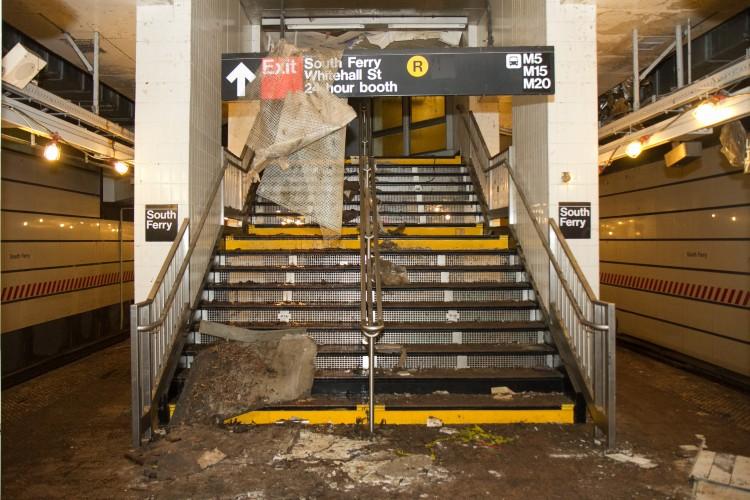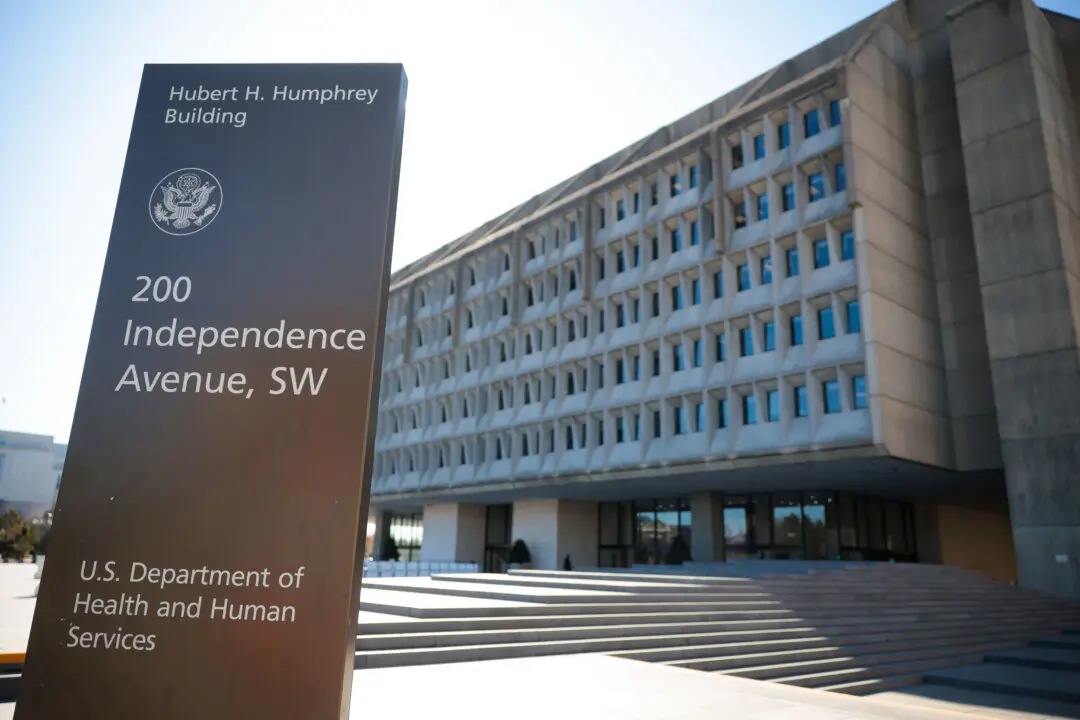NEW YORK—The South Ferry subway station, completely flooded and wrecked by Superstorm Sandy, will not be restored for at least six months, and possibly up to a year.
Located on the edge of Lower Manhattan, with a main entrance just across from the Staten Island terminal, South Ferry sustained millions in damages when water broke through a barrier placed at the main entrance prior to the storm.
Wooden barriers and sandbags were placed in front of 14 stations in the Lower Manhattan area before the storm hit. But debris—principally plywood and 2 by 8s—broke through the barrier at South Ferry, letting water rush in.
The severe impact was still evident on Dec. 5, more than one month later. Empty, without trains or passengers, it smelled like must. Random pieces of debris remained on a stairwell, which led under a wall and sheetrock ceiling that had come down, ending up at the station platform, which was covered in a thin layer of mud.
The station cavern ceiling, 20 feet high in some places, was entirely full of water during the storm. Water also exceeded that height and rose into the mezzanines.







